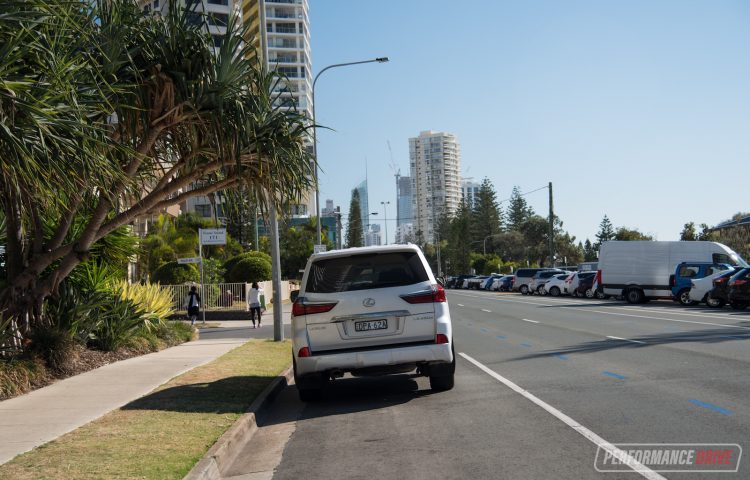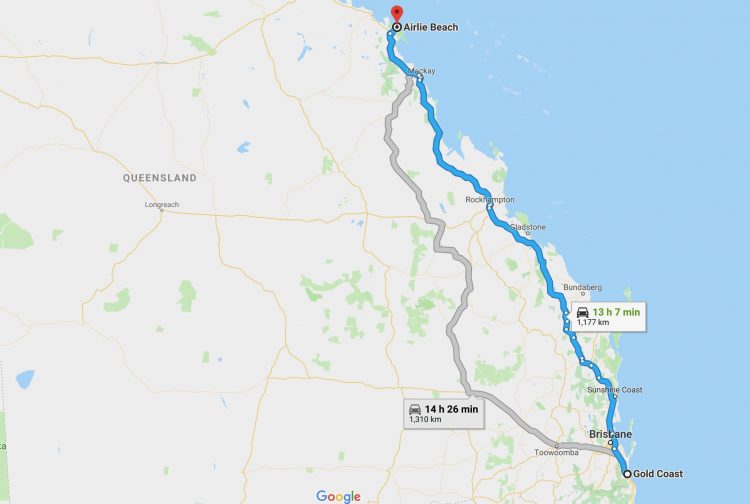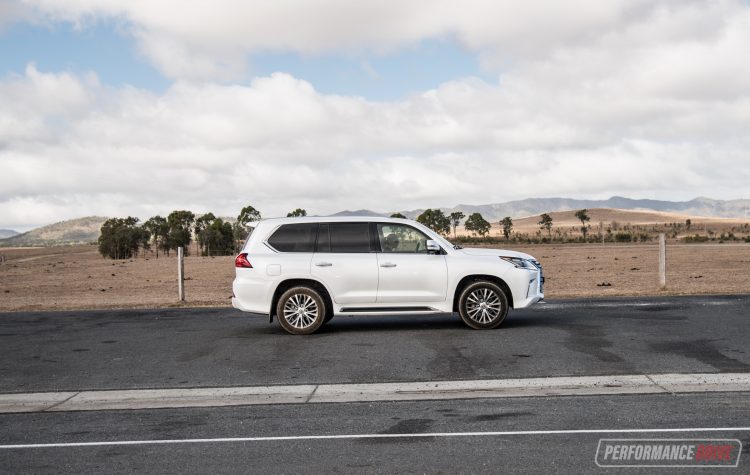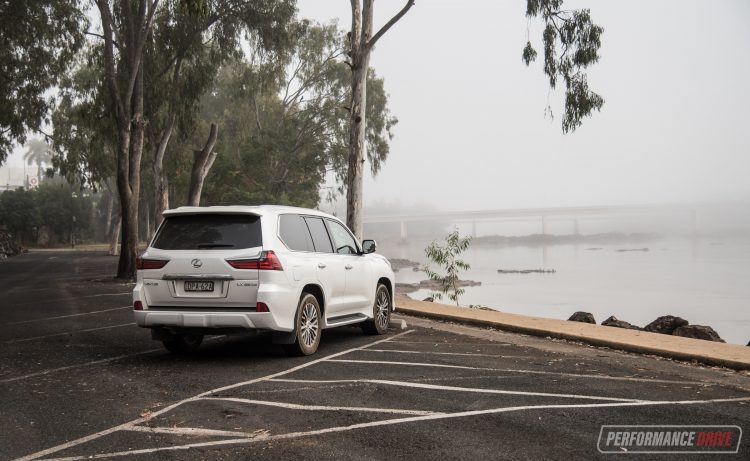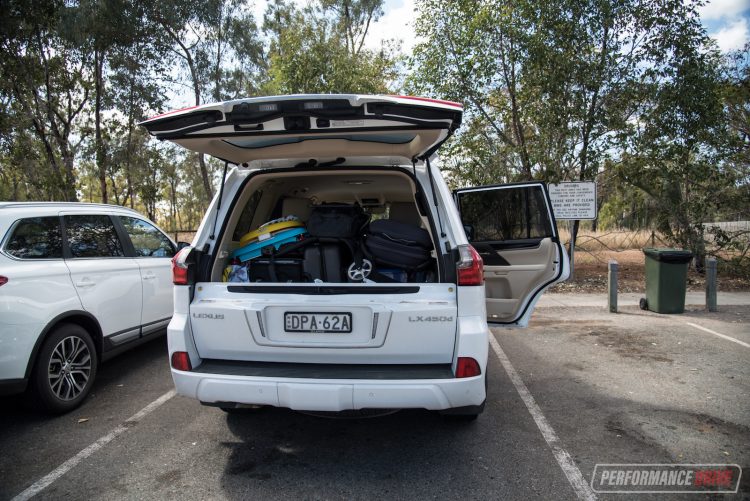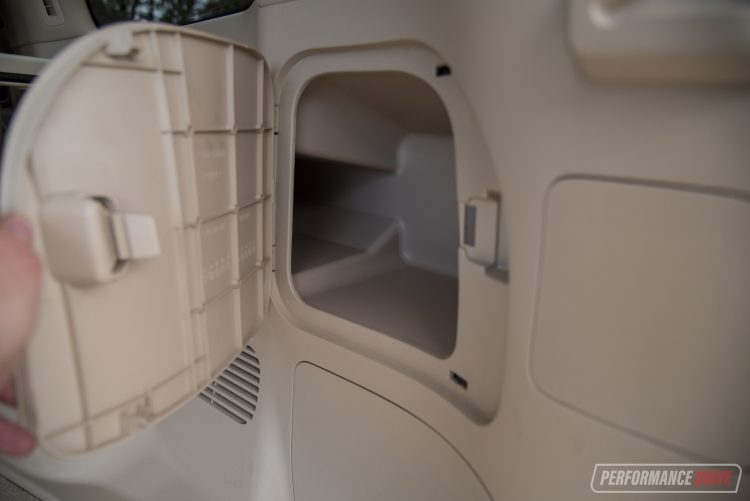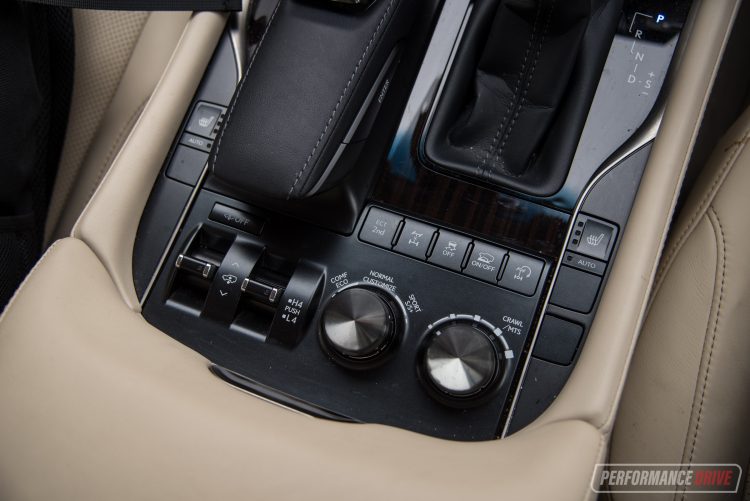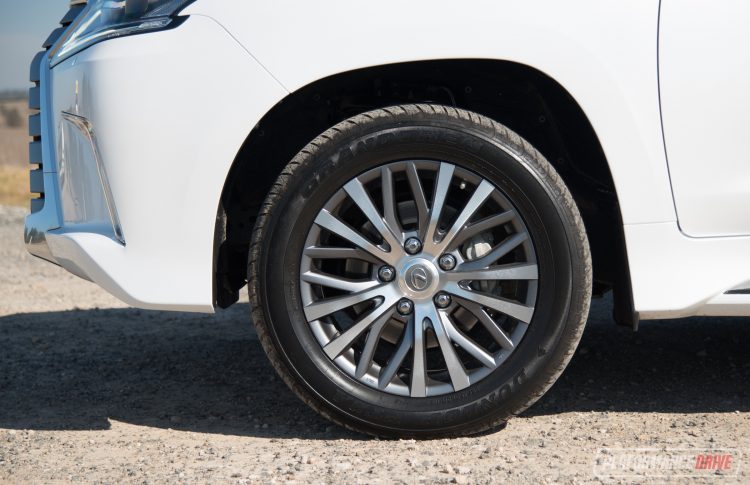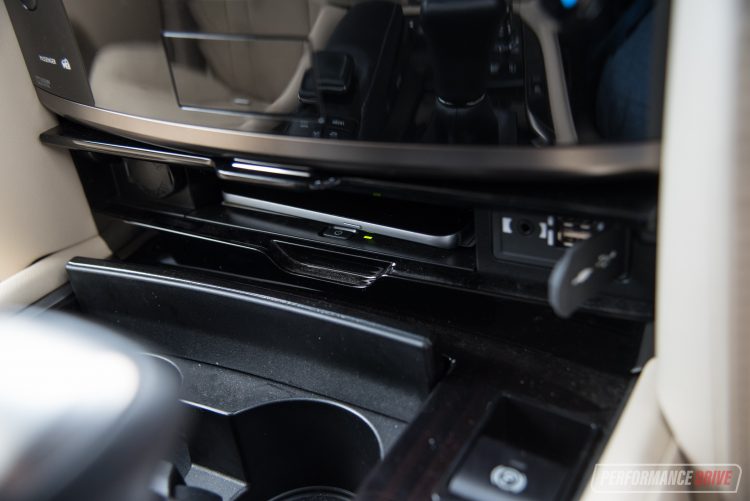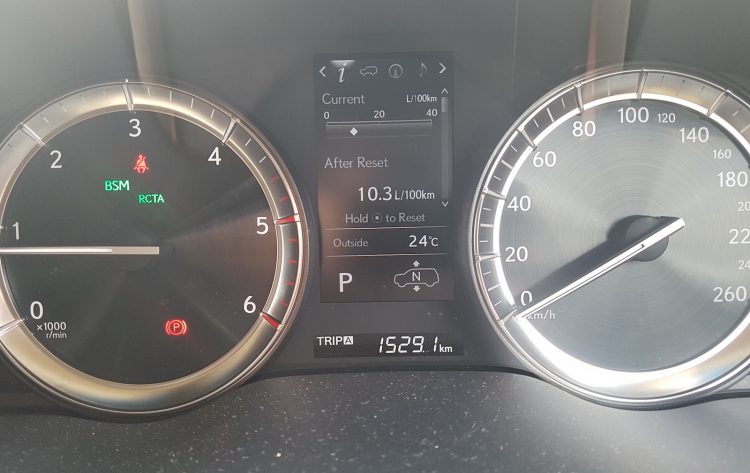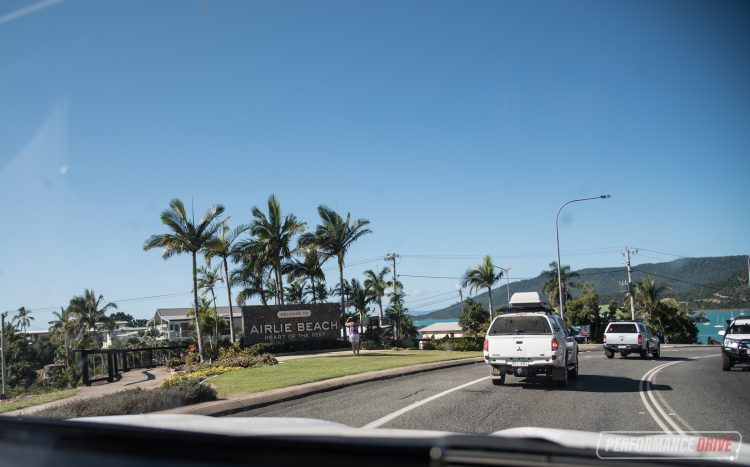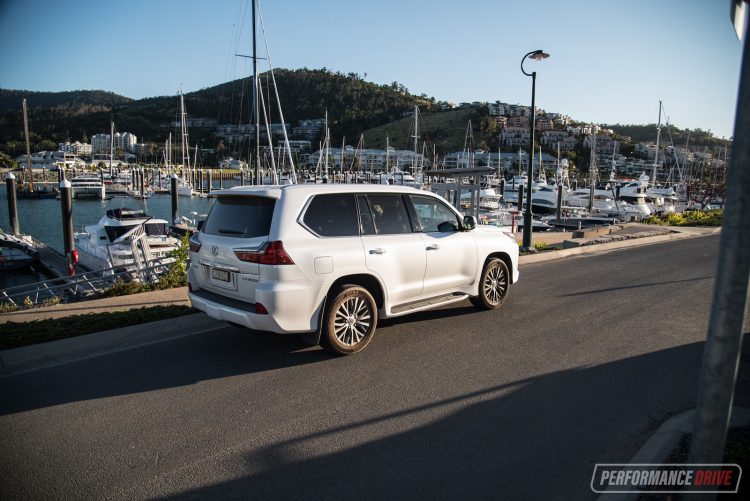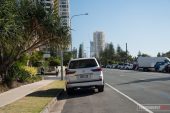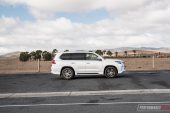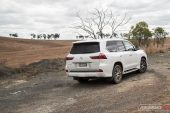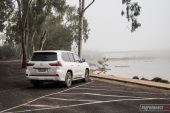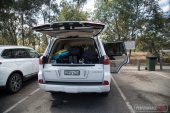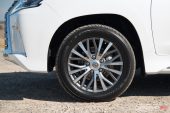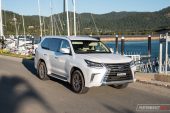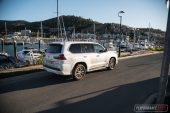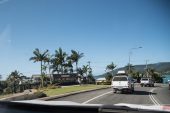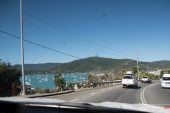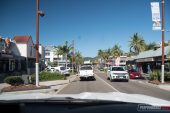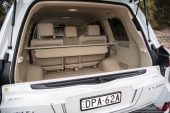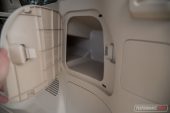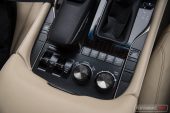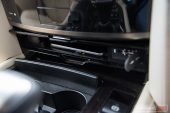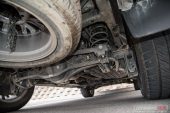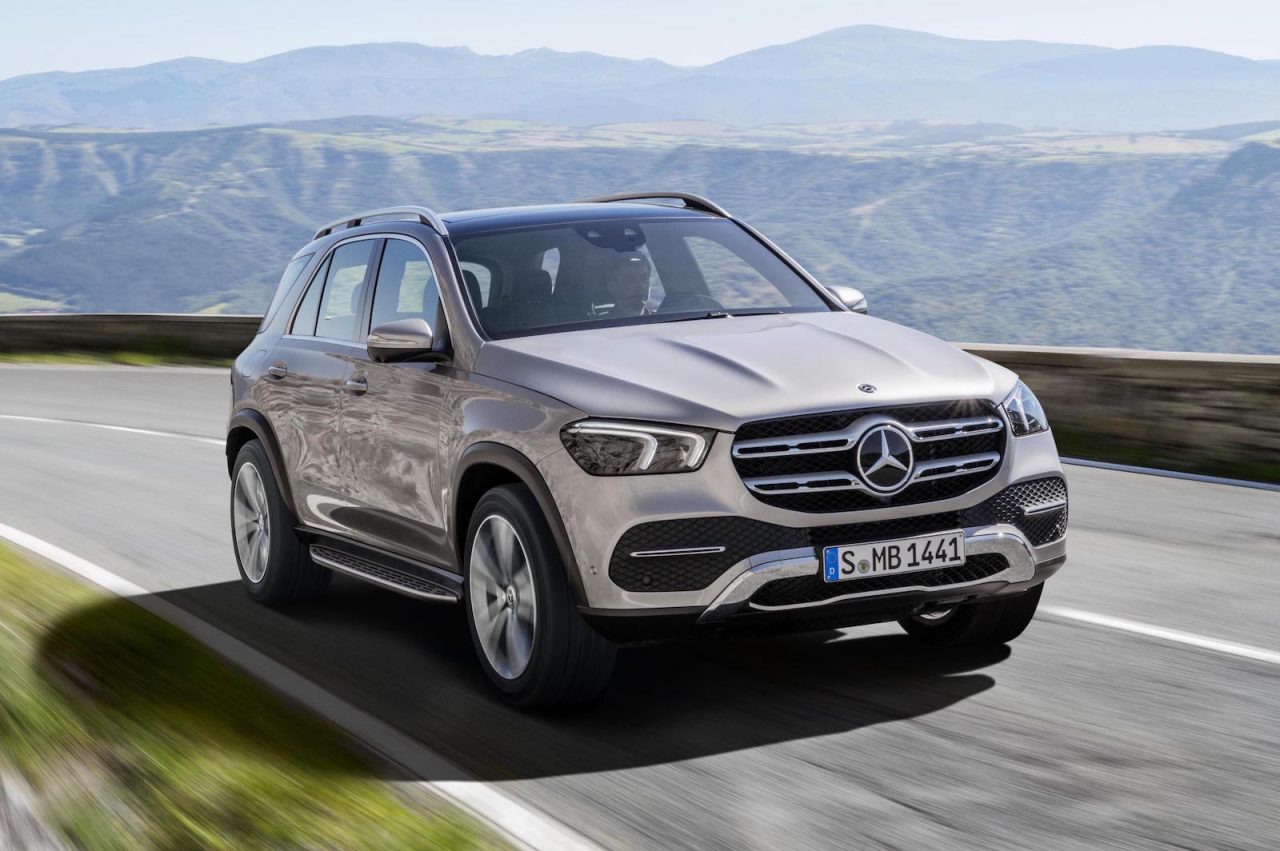After an 11-hour drive from Sydney to Gold Coast, with a stop-over at Port Macquarie during part 1, it was then up to Airlie Beach for our epic Sydney-to-Daintree trek in the new Lexus LX 450d.
This part of the leg is around 1200km, but it has a few interesting places to visit on the way including beautiful Noosa Heads, just north of Brisbane, and the famous Australia Zoo. Between Noosa and Rockhampton you can make a bit of a detour and check out Hervey Bay and Bundaberg, but we left this route for the return home. On the way up we followed Google Maps and it sent us slightly inland (not as inland as the grey option on the map below) and along a road called Brooweena Woolooga Road, which included about 20km of dirt road.
It was our first taste of off-road driving in the LX. And although it wasn’t exactly what you’d call ‘4x4ing’, it was amazing to see just how well the big LX soaks up uneven surfaces and corrugations. The LX 450d comes as standard with adaptive variable suspension and active height control. It’s not air suspension like what you might get on a Rover Rover. Instead, this incorporates a perhaps more heavy-duty setup with hydraulic height-adjustable dampers and coil springs, independent at all corners.
We had one overnight stop along the way, at Rockhampton. It was sad to see the Fitzroy River so low due to the drought at the moment. Having already spent about 11 hours in the LX 450d, and then another eight hours to Rockhampton, we were surprised by how comfortable it is getting back in, again and again. Often after a big drive in a vehicle the last thing you want to do is get back in it. At least for a while. But not so in the LX. A big part of this is due to the huge, welcoming interior and the soft cushy seats (heated in the front).
Unpacking and then packing the car back up again is made very easy thanks to the five-seat layout. And handily, the tailgate is split so that the top half can be opened for quick access to any items that might be floating around near the top or edge. The lower section then folds down for a nice little seating spot, or, in our case, a change table for our six-month old. When you flip the lower section back up you get power assistance to pull the last little bit closed, too. And then the top section closes back down electronically at the touch of a button.
In the wall of the cargo area is a pretty deep storage pocket that we used to store some emergency tools and a blanket. But obviously if you have the boot packed to the max like we did, then this compartment can be a bit of a struggle to get to. There’s also some storage under the boot floor and within the lower tailgate.
Hitting the road again, we left the driving mode in comfort. This provides the softest damper setting and is perfect for the straight highway. It can seem overly soft and even bouncy, especially if you encounter multiple little dips in a row, but aside from that the ride is brilliant in this setting. We then had the ‘customise’ mode configured to bring in the firmer sport suspension while leaving the powertrain response in normal. This is ideal for long sweeping bends as it tends to pull the car down and better brace it for lateral movements.
Lexus has gone with 20-inch alloy wheels for the LX 450d and wrapped them in Dunlop Grandtrek 285/50 tyres. These aren’t exactly low profile but they do provide a slightly improved cornering response to what’s fitted on most LandCruiser models. In saying that, there is still some sidewall left to absorb off-road driving obstacles (more on the off-road stuff in part 3).
For a lot of the journey it was either my wife or I sitting in the back so we could attend to the baby. And I have to say, the rear seat comfort in the LX is awesome. You’ve got your own climate control panel on the centre-seat flip-down armrest, with vents in the ceiling and in the back of the main centre console. You’ve also got pull-up sun blinds for the rear doors, and you can recline the rear backrest, which is split 60:40, for even more cruising comfort. The seat also slides back and forth electronically. Headroom and legroom are both more than respectable in the front and back.
Strangely though, there’s no power socket to recharge devices from the rear seat. You’ve got the Australian standard power outlet socket in the cargo area as mentioned in part 1, as well as two USBs ports, a wireless phone charging pad and 12V socket in the front, but nothing for the rear seat passengers.
Now that we’re been doing mostly highway driving, the average fuel consumption according to the trip computer (which we reset at the very start) has dropped from 10.7L/100km to 10.3. It seems this 4.5-litre twin-turbo V8 diesel remains pretty consistent. As mentioned before, 200kW and 650Nm is plenty of grunt even for this 2670kg beast, with our 0-100km/h testing resulting in a best of 9.86 seconds.
The fuel tank is smaller than the tank it the LX 570, as mentioned in part 1, measuring 93L against 138L. But, the potential range is similar thanks to the diesel engine’s reduced thirst. In fact, you’ll get further in the diesel. Using the official average of 9.5L/100km, the range potential is 979km in this diesel against 958km in the LX 570 petrol. Interestingly, the Toyota LandCruiser Sahara, with the same ‘1VD-FTV’ diesel engine, comes with a 138L fuel tank. This gives you a superior potential average range of 1453km.
For our trip we filled up whenever to tank dropped to around 50 per cent, mainly because we weren’t exactly sure when we’d next find a petrol station but also in case we needed to keep driving without stopping for the sake of a sleeping baby. On average, we achieved about 450-500km between fuel stops, projecting to about a 1000km range in mostly highway conditions. Officially, the highway consumption is stamped at 8.5L/100km, and 11.2L/100km in the city. As we said, it seems like a pretty consistent engine.
Arriving into Airlie Beach is like arriving in another country. The glittering town is known as the main hub for the spectacular Whitsunday Islands, with a neat marina and township nestled at the foot of steep hills that rise up right in front of the shore – it almost feels like you’re in Greece or on the Italian coast. It’s easy to get accommodation with a view as well, as most of the hotels and appartments are wedged right into the hills.
We had a chance to check out The Beacons, which is an exclusive street with residents having their own beach in the backyard and direct access to a jetty just across the road. This is the perfect setting for the LX 450d. In fact, it felt like we needed to be towing a nice luxury boat to complete the picture.
So far the LX has been the perfect companion for this sort of grand touring journey up through Australia. We’re honestly struggling to find anything substantial to criticise. Maybe the bumpy Bloomfield track will uncover some issues? Stay tuned for part 3. We’ll be heading up to Cooktown and the remote village of Hope Vale, over to Elim Beach for some crocodile-dodging sand driving, before heading down to our final destination at Daintree.
